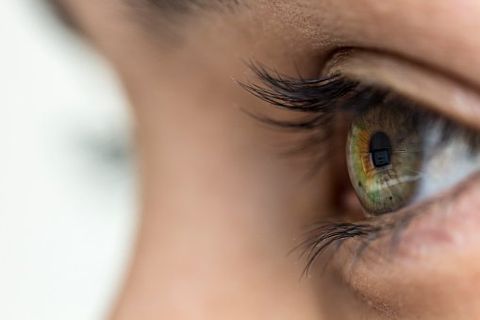Cataract Surgery in Sarasota, Florida
You do not have to live with cataracts. That's why Sarasota Ophthalmology
in Sarasota, Florida
is here. Our board certified cataract surgeons will help you or your loved one overcome cataracts.
Our Board Certified Physicians and Surgeons, Cornelius Halvey, M.D., F.A.C.S. and David Campbell, M.D., F.A.C.S., have experience in every major field of ophthalmological diagnosis, treatment, and after-care including:
Our Board Certified Physicians and Surgeons, Cornelius Halvey, M.D., F.A.C.S. and David Campbell, M.D., F.A.C.S., have experience in every major field of ophthalmological diagnosis, treatment, and after-care including:
- No-Stitch Small Incision Cataract Surgery
- Diabetes Care
- Glaucoma Care
- Laser Procedures
- General Ophthalmology
- Botox Injections
Cataract Surgery
If you or a family member is diagnosed with cataracts, contact our service. Our doctors will be happy to meet with you prior to your surgery to discuss the procedure and your individual needs. For your procedure, our surgeons will utilize their experience with our state-of-the-art small-incision equipment to perform a sutureless cataract surgery. To do this, we use phacoemulsification which removes your cataract through a microscopic incision.
What is a Cataract?
Approximately 20.5 million Americans age 40 and older have cataracts.
A cataract is clouding of the eye's normally clear lens, similar to a window that is fogged with steam. When the lens becomes cloudy, light rays cannot pass through it easily which causes the vision to become blurry. A cataract is not a growth or a film over the eye.
A cataract usually starts out small or mild and has little effect on vision. As the cataract becomes more dense, the impact on vision becomes more noticeable. You may notice some or all of the following:
A cataract usually starts out small or mild and has little effect on vision. As the cataract becomes more dense, the impact on vision becomes more noticeable. You may notice some or all of the following:
- Painless blurring of vision
- Sensitivity to light and glare
- Double vision in one eye
- Poor night vision
- Fading or yelloWing of colors
- Frequent changes in glasses or contact lens prescriptions
More than half of all Americans develop cataracts by age 80. Although cataracts usually develop as part of the aging process, they can also result from:
- Eye injuries
- Certain diseases, such as diabetes
- Genetic inheritance
- Certain medications
- Frequent, unprotected exposure to UV-A and UV-B rays
- Smoking
Currently, there are no medications or exercises that will cause cataracts to disappear. However, if cataracts don't interfere with your life, you may decide not to do anything about them.
When they do begin to interfere with daily activities, they can be treated surgically. Cataract surgery is one of the safest and most frequently performed surgeries in the United States, with more than 1.6 million surgeries performed each year. After surgery, vision is improved in most patients. Laser treatment is sometimes used after cataract surgery to remove a film that can occasionally grow behind the lens implant.
Remember, cataracts are detected through a comprehensive eye exam. Early treatment may save your sight.
Because there's so much more to see.
If you find that a cataract is interfering with your vision, contact us. We regularly see patients that have cataract surgery because they are having difficulty seeing the golf ball, reading small print, or experiencing difficulties driving at night. The most common response the day after surgery is, "when can I have the other eye done?" followed by "why did I wait so long" or "I can't believe how vivid and clear colors are."
When they do begin to interfere with daily activities, they can be treated surgically. Cataract surgery is one of the safest and most frequently performed surgeries in the United States, with more than 1.6 million surgeries performed each year. After surgery, vision is improved in most patients. Laser treatment is sometimes used after cataract surgery to remove a film that can occasionally grow behind the lens implant.
Remember, cataracts are detected through a comprehensive eye exam. Early treatment may save your sight.
Because there's so much more to see.
If you find that a cataract is interfering with your vision, contact us. We regularly see patients that have cataract surgery because they are having difficulty seeing the golf ball, reading small print, or experiencing difficulties driving at night. The most common response the day after surgery is, "when can I have the other eye done?" followed by "why did I wait so long" or "I can't believe how vivid and clear colors are."
General Ophthalmology
To complement our optical services, we also provide routine care including regular and diabetic eye exams. These exams can be utilized for routine care, monitoring eye pressure, and finding pre-existing, or even new, issues.
In addition to this, we also offer an entire line of OCuSOFT products to remedy your eyelid and dry eye problems. These products help with cleaning the eyelid and combating dry eye issues.
We do accept medical insurance for ophthalmology and surgical services.
Cataract Surgery (WHAT YOU NEED TO KNOW ABOUT ...)
In addition to this, we also offer an entire line of OCuSOFT products to remedy your eyelid and dry eye problems. These products help with cleaning the eyelid and combating dry eye issues.
We do accept medical insurance for ophthalmology and surgical services.
Cataract Surgery (WHAT YOU NEED TO KNOW ABOUT ...)
Additonal Information and Brocures
Contact us in Sarasota, Florida, and give your vision the care it needs with eye care surgery.









